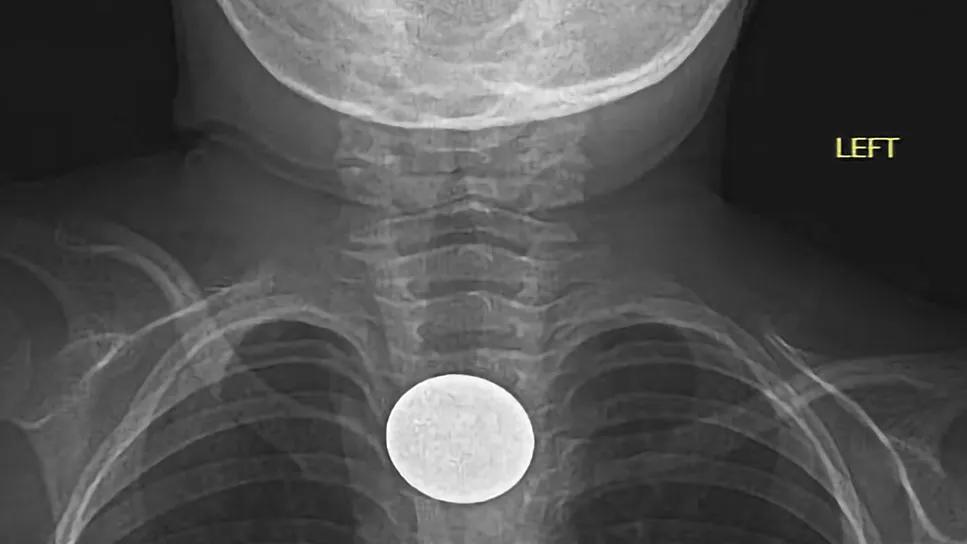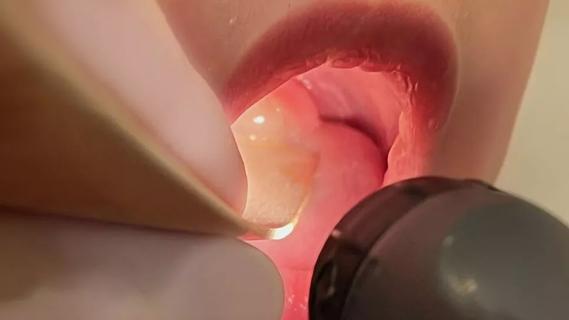Surprising X-ray results explain a snoring sound heard during breathing

A four-year-old patient with multiple diagnoses, including global developmental delay and autism, was brought to the pediatric otolaryngology clinic for severe congestion, mucus and oral aversion.
Advertisement
Cleveland Clinic is a non-profit academic medical center. Advertising on our site helps support our mission. We do not endorse non-Cleveland Clinic products or services. Policy
The patient was known to the team, as he had previously been seen in the Pediatric Center for Airway, Voice and Swallowing Disorders (PCAVS) clinic. However, he had not been seen for about a year prior to the visit.
“His mom felt that something was wrong,” says Swathi Appachi, MD, a pediatric otolaryngologist who also participates in PCAVS. “She said something had been off with him for the past few months. He was snoring, constantly congested, had a really bad cough and it had gotten worse.”
During the examination, the patient’s breathing had a loud snoring sound, with frequent throat-clearing.
Dr. Appachi considered whether obstructive sleep apnea might be involved and wanted to check his adenoids. Concerned that he would not tolerate an endoscope, she referred him for an X-ray instead, and the patient was seen by radiology later the same day.
“Even if he didn’t have sleep apnea, if the X-ray showed his adenoids were enlarged, he may still have benefitted from an adenoidectomy since he was presenting with such severe congestion,” says Dr. Appachi.
A few hours later, radiology contacted Dr. Appachi with a surprising finding: the X-ray revealed a coin was lodged in the child’s esophagus.

Dr. Appachi immediately called the mother and told her to take the child directly to the Emergency Department at Cleveland Clinic. However, the family was already there; when radiology had been unable to immediately reach Dr. Appachi, who had been on another call, they contacted the mother directly with the results and instructions.
Advertisement
The patient ended up being treated by gastroenterology, who removed the coin — a quarter — via esophagogastroduodenoscopy. The team reported ulceration at the site of the coin, and found furrow-like outpouching in the esophagus, indicating that it had likely been there for several months.
With the discovery, providers realized that the child’s congestion and coughing wasn’t caused by nasal inflammation or enlarged adenoids. Rather, it was because he was unable to swallow normal amounts of saliva and mucus, which caused the secretions to accumulate in his throat and upper airway.
The patient has been doing well since the procedure, and he has seen the GI team for follow-up appointments.
Although his congestion, snoring and other nasal symptoms have resolved, his oral aversion has become more severe, likely as a result of his ordeal.
In addition to the surprising finding, Dr. Appachi said the case highlights the value of multidisciplinary collaboration on complex patients.
Because the providers worked together frequently as part of the PCAVS airway clinic, they were able to quickly communicate and coordinate for the patient’s care.
“I am especially happy that the radiologist didn’t just leave me a message, but they reached the patient directly and told them to go to the ER,” she said. “Between our PCAVS team, radiology and the GI team, we worked together at every level to get this patient care. I thought it demonstrated real teamwork.”
Advertisement
Advertisement

Prompt surgery was necessary when symptoms drastically increased

With a wide scope of skills, comprehensive otolaryngologists care for patients of all ages in the community

Case-control study yields evidence of epigenetic aging in pediatric-onset MS

Specialists are increasingly relying on otolaryngologists for evaluation and treatment of the complex condition

Leaders of the Pediatric Cancer Committee discuss new accreditation

Complex disease requires a comprehensive approach

Self-efficacy mindset, burst therapy and increased biofeedback may help improve outcomes

Effect of low-dose atropine and dual-focus contact lenses is unknown in patients with comorbid eye conditions